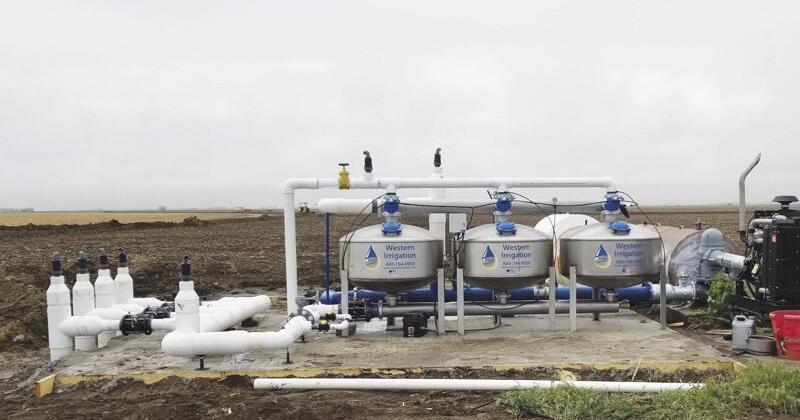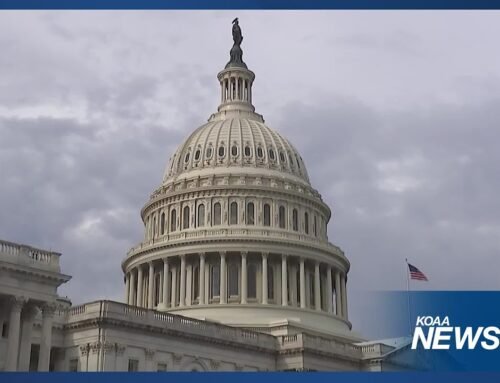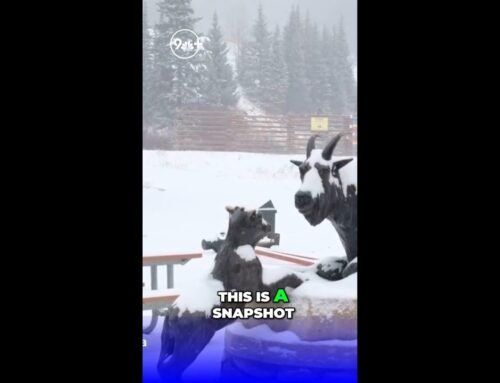

Randy Wildeman of Western Irrigation says he has a way for farmers to save money and have higher yields. That way would be to use drip irrigation.
“Drip irrigation can save money by decreasing water usage and reduce labor costs,” said Wildeman, a subsurface irrigation specialist. “It can increase yields as well.”
Western Irrigation got into subsurface irrigation in the 1990s, he said. It has become much more popular over the last three decades. The main appeal is the cost savings: cutting the water farmers use by huge margins, reduced labor and time, as well as less plant disease and no need for pivot insurance, he said.
“Drip uses 30% less water than a pivot system,” Wildeman said. “It uses 50% less water than flood irrigation. Mostly due to evaporation.”
The subsurface system is installed in fields about 14 to 16 inches below the ground. The “tape,” as it is known, is run 40 inches to 60 inches apart throughout the field.
With no pivot, there is no need for monitoring of sprinkler heads or operating pressure. This saves labor time, thus labor costs. No tires to repair, either. The water doesn’t sit on the plants, so there is no corresponding health issues for the crop.
“I continuously check with my customers to see how things are going,” Wildeman said. “They always tell me the drip fields are their best-yielding fields.”
He said the underground water keeps the soil mellow so there is no hard pan. This has resulted in a 30-60 bushel per year yield increase.
The main drawback for subsurface system is the initial outlay, he said. Yet, he has seen farmers recoup that expense in a few years through their savings and increased yield.
People are also reading…
The secret to its success is simple. The drip system meets the crop evapotranspiration more efficiently than an above-ground system, Wildeman said.
“With this method, we make sure you’re putting enough water where it is needed for your crop’s ET,” he said. “That is easier due to the uniformity from front end to bottom.”
The design of the subsurface system is critical, he said. The first thing he does is check a field’s topography and soil type. These factors both impact which kind of tape to install.
“We want to be sure we’re using the right tape for the right flow,” Wildeman said. “We have two styles of tape – one for flat and one for a gradual slope.”
Hilly or contoured fields can be taped, too. It just requires pressure compensating emitters. This is a little more expensive, Wildeman said.
That is another advantage drip has on pivot or flood, though. The way it’s placed helps it work out well on odd-shaped fields, he said. Farmers can still run nutrients and fertilizer through the lines, too.
The subsurface method is mainly designed for annual crops such as soybeans and corn, Wildeman said. Some people use it with alfalfa, but that requires more watching, as those roots are more aggressive.
For those already using one of the above-ground systems, that is no problem, he said. Converting from pivot to drip is easy, and from flood to drip is even easier, Wildeman said. As far as the increased cost, he said the government may offer funding through the NRD or NRCS.
Western Irrigation services a good portion of Colorado, Nebraska and Kansas. These are the biggest areas; but they do service the Dakotas, he said. For more information, Wildeman suggests contacting the Western Irrigation dealerships in Hastings, Nebraska, or Grand Island, Nebraska.
Jon Burleson can be reached at jon.burleson@lee.net.
…
https://agupdate.com/farmandranchguide/article_154acfbc-8da8-11eb-ba29-43db604bcdcb.html
agupdate.com
Feed Name : agupdate.com – RSS Results in farmandranchguide of type article
https://bloximages.chicago2.vip.townnews.com/agupdate.com/content/tncms/assets/v3/editorial/5/8d/58dced50-8da8-11eb-84e8-db2577534c8c/605cf206322be.image.jpg?resize=300%2C195#
hashtags : #Drip #save #drop #bucket






Leave A Comment